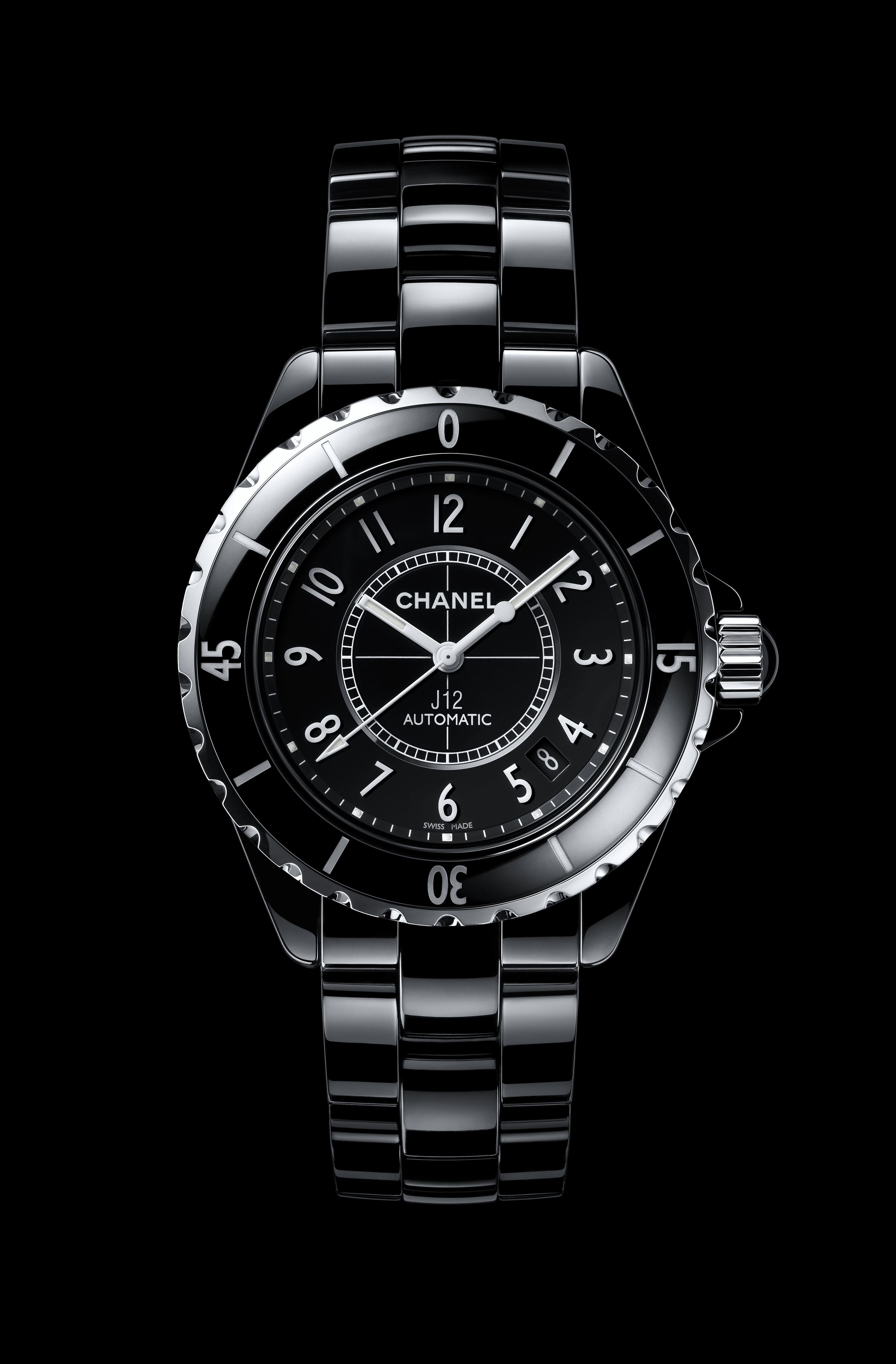
For the past two decades, the J12 has been an unbeatable bestseller among Chanel’s timepieces. When the French fashion house announced it would discontinue production of its most recognizable model and launch a new version, many industry observers eyed the exercise as unnecessarily risky. Why mess with perfection?
The J12—named after the J-Class single-masted sailboats in the America’s Cup race—revolutionized the design of unisex luxury sport watches when it was unveiled in 2000. Designed by Jacques Helleu, then artistic director of Chanel’s jewelry division, it was the first luxury watch to be made in black ceramic. Its sporty look made it wearable by both men and women—a pioneering marketing move. The J12 achieved great commercial success and helped establish Chanel as a major player in the crowded field of luxury watchmakers.
The new J12 watch. Courtesy of Chanel.
When Chanel announced the original J12 was to be retired, Nicolas Beau, chief executive of the maison’s watch division, took the opportunity to introduce Arnaud Chastaingt, director of Chanel’s Watch Creation Studio. “We thought the moment had come to reveal the face behind our watches,” Beau said.
Since 2013, Chastaingt had been busily designing a growing lineup of watches for both men and women, among them the Boy.Friend, the Code Coco, and Monsieur de Chanel (the maison’s first men’s watch), and Chanel’s rich collection of métiers d’art watches. For several years, Chastaingt had tip-toed toward changing the J12. He produced various iterations inspired by its design: a version was minimized and set on a black glove, another was affixed onto an embroidered cuff bracelet, and last year, a small series was produced in marquetry of ceramic, all experimental capsule collections that did not alter the J12’s “core” look.
Arnaud Chastaingt, director of Chanel’s Watch Creation Studio. Courtesy of Chanel.
Still, reinventing the J12 was a challenge Chastaingt felt he couldn’t avoid. “It was love at first sight with the J12, but I realized that I could not leave it untouched,” he said. “This was the most complex exercise of my career. It is much simpler to start from scratch than to retouch an icon.”
His goal was to strike a delicate balance between refreshing the watch without eliminating any of its signature cues. The J12 that was finally unveiled last month is so subtly freshened-up that it is easy to miss the improvements at first glance. Chastaingt altered the timepiece with surgical precision: its numerals were redrawn, its crown is smaller, and its case is faintly curvier than the original’s. Seventy percent of the components are new.
“In the end, we chose a paradox, which was to change everything without changing much at all,” Chastaingt said.
The Calibre 12.1 movement produced by Kenissi for Chanel. Courtesy of Chanel.
That may be an understatement given that the J12 now integrates a new automatic movement, the “Calibre 12.1,” which is visible through the watch’s clear case back. To accomplish this, Chanel acquired a 20 percent interest in Kenissi, a movement maker for the Tudor watch brand. Tudor is owned by the Hans Wilsdorf Foundation, which also controls Rolex.
“To produce a movement of this quality in industrial quantities, we needed a strategic partner with a technologically important input given the long-term relationship we had in mind,” Beau said.
The news of Chanel’s partnership with the extended Rolex family came as a surprise to the watch industry. Chanel has mostly been associated with smaller independent watch brands, including Romain Gauthier and Montres Journe. The partnership with Kenissi promises to strengthen Chanel’s production capacity while elevating its timepieces onto a higher playing field in the eyes of watch connoisseurs.
Today’s J12 may not look radically different to yesterday’s, but—as did the original in 2000—it will likely have a stellar impact on Chanel’s future as a luxury watchmaker.